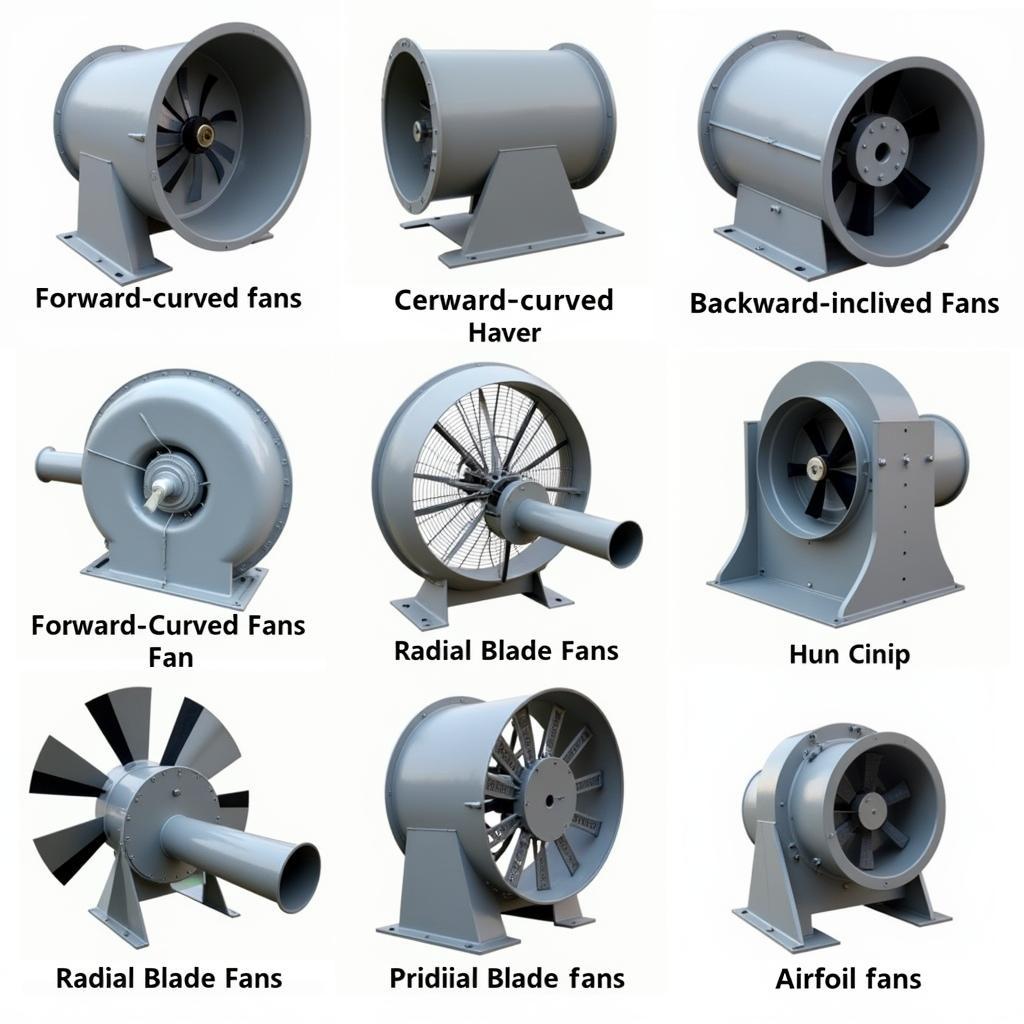Centrifugal fans are essential components of many industrial and commercial applications, quietly working behind the scenes to keep processes running smoothly. But have you ever stopped to consider how these unsung heroes of ventilation actually work? This comprehensive guide delves into the Centrifugal Fan Working Principle, exploring the mechanics that allow these devices to move air effectively and efficiently.
Understanding the Basics: How Centrifugal Fans Work
At its core, a centrifugal fan operates on the principle of converting kinetic energy into potential energy. This principle is put into practice through the following steps:
- Air Intake: The process begins with air entering the fan through the inlet, which is typically located at the center of the fan wheel.
- Impeller Action: Once inside, the air encounters the rotating impeller, a component comprised of multiple blades. As the impeller spins, driven by a motor, it imparts kinetic energy to the air.
- Centrifugal Force: The spinning motion of the impeller creates centrifugal force, pushing the air outwards, away from the center of the fan, and towards the fan housing.
- Air Compression: As the air is forced outward, it is also compressed against the fan housing. This compression leads to an increase in air pressure.
- Air Discharge: Finally, the pressurized air is directed through the fan’s outlet, where it is discharged into the ductwork or directly into the intended space.
Key Factors Influencing Centrifugal Fan Performance
Several factors can impact the efficiency and performance of centrifugal fans. Understanding these factors is crucial for selecting and maintaining these fans for optimal performance.
- Impeller Design: The shape, size, and number of blades on the impeller significantly influence airflow and pressure capabilities.
- Fan Housing: The shape and size of the fan housing, specifically the volute (the spiral casing around the impeller), play a crucial role in directing and compressing the air.
- Motor Speed: The rotational speed of the motor directly impacts the amount of kinetic energy imparted to the air, influencing both airflow and pressure.
- System Resistance: The resistance encountered by the air as it travels through the ductwork or ventilation system can affect the fan’s performance. This resistance is determined by factors like duct size, shape, and the presence of obstructions.
Advantages of Centrifugal Fans
Centrifugal fans offer several advantages that make them suitable for a wide range of applications:
- High Pressure Capabilities: These fans are known for their ability to generate relatively high static pressure, making them suitable for applications requiring air movement against resistance.
- Constant Airflow: Centrifugal fans are designed to provide a consistent and predictable airflow, even when operating against varying system pressures.
- Durability and Longevity: The robust construction of centrifugal fans, often utilizing metal components, ensures their durability and longevity, even in demanding environments.
 Different Types of Centrifugal Fans
Different Types of Centrifugal Fans
Applications of Centrifugal Fans
The versatility of centrifugal fans makes them suitable for a wide range of applications across various industries:
- HVAC Systems: Centrifugal fans are commonly employed in heating, ventilation, and air conditioning (HVAC) systems to circulate air within buildings.
- Industrial Ventilation: These fans play a crucial role in industrial settings by removing dust, fumes, and other airborne contaminants from workspaces, ensuring a safe and healthy environment.
- Process Cooling: Centrifugal fans are used to cool industrial equipment and machinery by providing a constant flow of air over heated components.
Understanding the centrifugal fan working principle is essential for selecting the right fan for a specific application. By considering factors like airflow requirements, pressure capabilities, and the specific demands of the environment, it is possible to optimize performance and ensure efficient operation.
For more information on specific fan types and their applications, explore our articles on industrial centrifugal fans, the difference between blower and exhaust fan, and cased axial fans.



